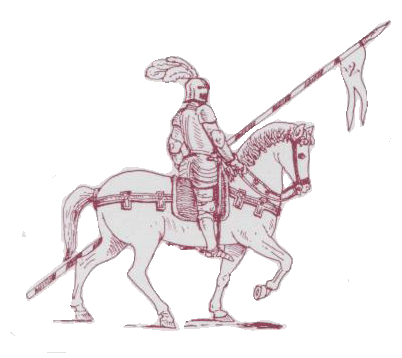Cisco Networking Syllabus
Course: Cisco
Grade Level: 11/12
Instructor: Yuhong Sun
Course Length: 2 Years
Summary:
This is a 2 year sequence course including LAN and WAN. LAN consists of Discovery I, Discovery II while WAN consists of Discovery III and Discovery IV. Both LAN and WAN deal with the theories behind network design, installation, administration and maintenance of computer networks. Content is delivered via the Internet under the guidance of the local instructors. There is a major "hands-on" component.
Discovery I
Goals: After completion of this course, students should be able to:
- Set up a personal computer system, including operating system, interface cards and peripheral devices.
- Plan and install a home or small business network and connect it to the Internet.
- Verify and troubleshoot network and Internet connectivity.
- Share resources (files and printers) among multiple computers.
- Recognize and mitigate security threats to the home network.
- Configure and mitigate security threats to the home network.
- Configure ad verify common Internet applications.
- Configure basic IP services via a GUI interface.
Units of Study:
- Course Introduction
- Personal Computer Hardware
- Operating Systems
- Connecting to the Network
- Connecting to the Internet Through an ISP
- Network Addressing
- Network Services
- Wireless Technologies
- Basic Security
- Troubleshooting Your Network
- Course Summary
Discovery II
Goals: After completion of this course, you should be able to:
- Describe the structure of the Internet and how communications on the Internet occurs between hosts.
- Install, configure and troubleshoot Cisco IOS devices for Internet and server connectivity.
- Plan the basic wired infrastructure to support network traffic.
- Configure a server to share resources and provide common Web services.
- Implement basic WAN connectivity using Telco services.
- Demonstrate proper disaster recovery procedures and perform server backups.
- Monitor network performance and isolate failures.
- Troubleshoot problems using an organized, layered procedure.
- Describe the OSI model and the process of encapsulation.
Units of Study:
- Course Introduction
- The Internet and its Uses
- Help Desk
- Planning a Network Upgrade
- Planning the Addressing Structure
- Configuring Network Devices
- Routing
- ISP Services
- ISP Responsibility
- Troubleshooting
- Course Summary
Discovery III
Goals: Upon completion of the Introducing Routing and Switching in the Enterprise course, you should be able to:
- Implement a LAN for an approved network design
- Configure a switch with VLANs and inter-switch communication
- Configure routing protocols on Cisco devices
- Implement access lists to permit or deny specified traffic
- Implement WAN links
- Perform LAN, WAN, and VLAN troubleshooting using a structured methodology and the OSI model
Units of Study:
- Course Introduction
- Networking in the Enterprise
- Exploring the Enterprise Network infrastructure
- Switching in an Enterprise Network
- Addressing in an Enterprise Network
- Routing with a Distance Vector Protocol
- Routing with a Link-State Protocol
- Implementing Enterprise WAN links
- Filtering Traffic Using Access Control Lists
- Troubleshooting an Enterprise Network
- Course Summary
Discovery IV
Goals: Upon successful completion of this course, you will learn:
- The purpose of a good network design.
- To use the Cisco Life Sycle Services approach on a network design project.
- Techniques to characterize an existing network to prepare for an upgrade.
- The impact of various applications and services on the network design.
- The design requirements of the Campus Core, Distribution, and Access Layer, including wireless access and security.
- The design requirements of the Enterprise Edge WAN connectivity and VPN support for remote workers.
- The process to test and validate and Campus network and WAN design.
- The preparation and presentation of a network upgrade proposal.
Classroom Expectation:
Attendance and policy on make-up work:
Attendance is expected. Students will be responsible for all assignments and activities.
Assessment:
- Distinguished: (A+, A, A-) Reserved for the student who has gone above and beyond what is expected. The level of work is far beyond the standard level of proficiency.
- Advanced: (B+, B, B-) These grades are given for exemplary work. The quality of the student's work and learning is expected to be at a level beyond the standard of proficiency.
- Proficient: (C+, C, C-) These grades represent what all students should be able to know and do after completion of class. The student has met the learning requirements for the class and should be proficient in this knowledge.
- Novice: This grade represents an emerging level of meeting the learning expectations of the class. This means that the student has made sufficient progress toward meeting the class expectations.
- No Credit: This grade signifies that there are major gaps in this student's learning. The student does not get credit for the class.
Quizzes and exams will be based on the Cisco Assessment Server resources located at:
http://cisco.metcad.net
Exams will be enabled in every class and on weekends if requsted.
Required Materials:
Recommended Textbook and On-line Resources:
This course uses the Cisco Academy Semester 1, Semester 2, Semester 3 and Semester 4 curriculum (Version 4.0) that can be accessed by registered students over the Internet at: http://cisco.netacad.net
Honors Option:
Running Start College Course
